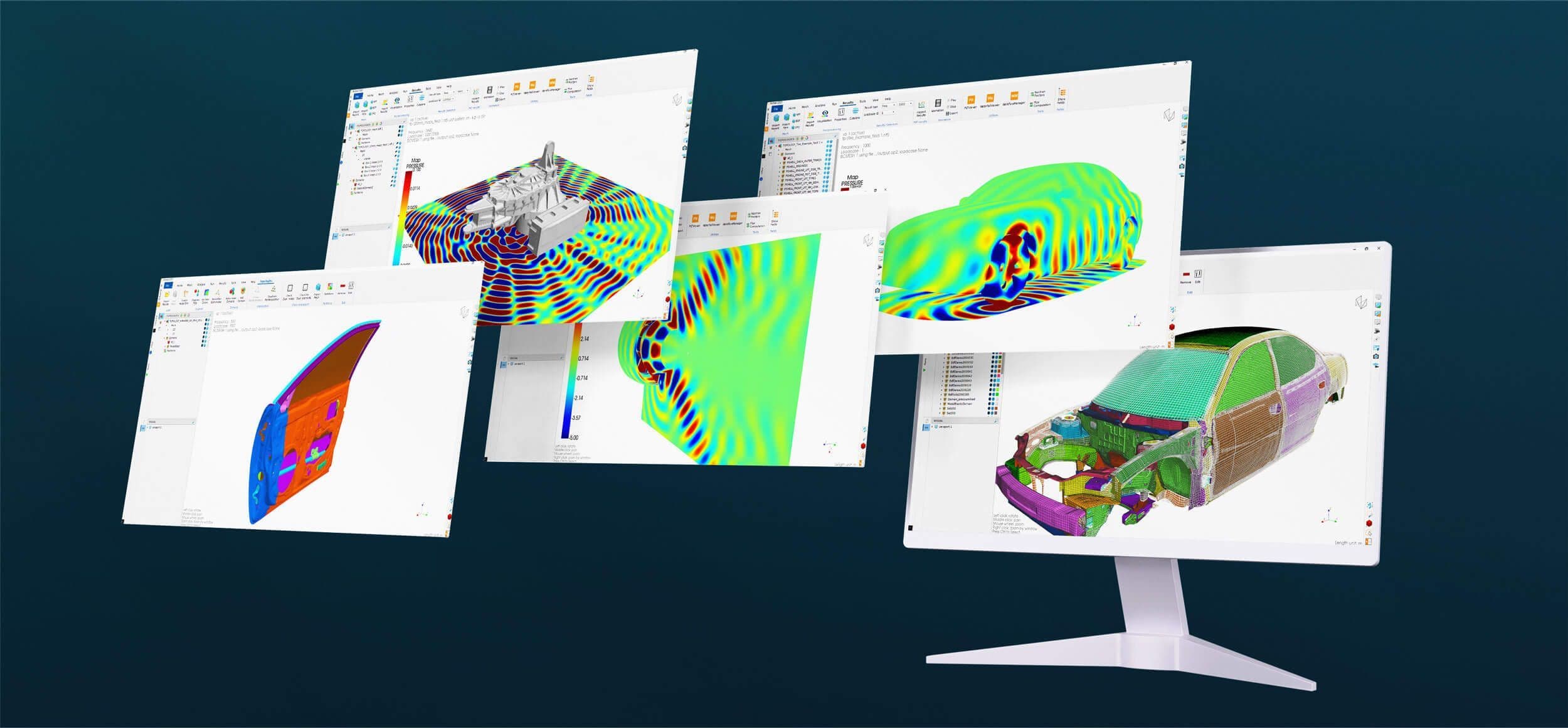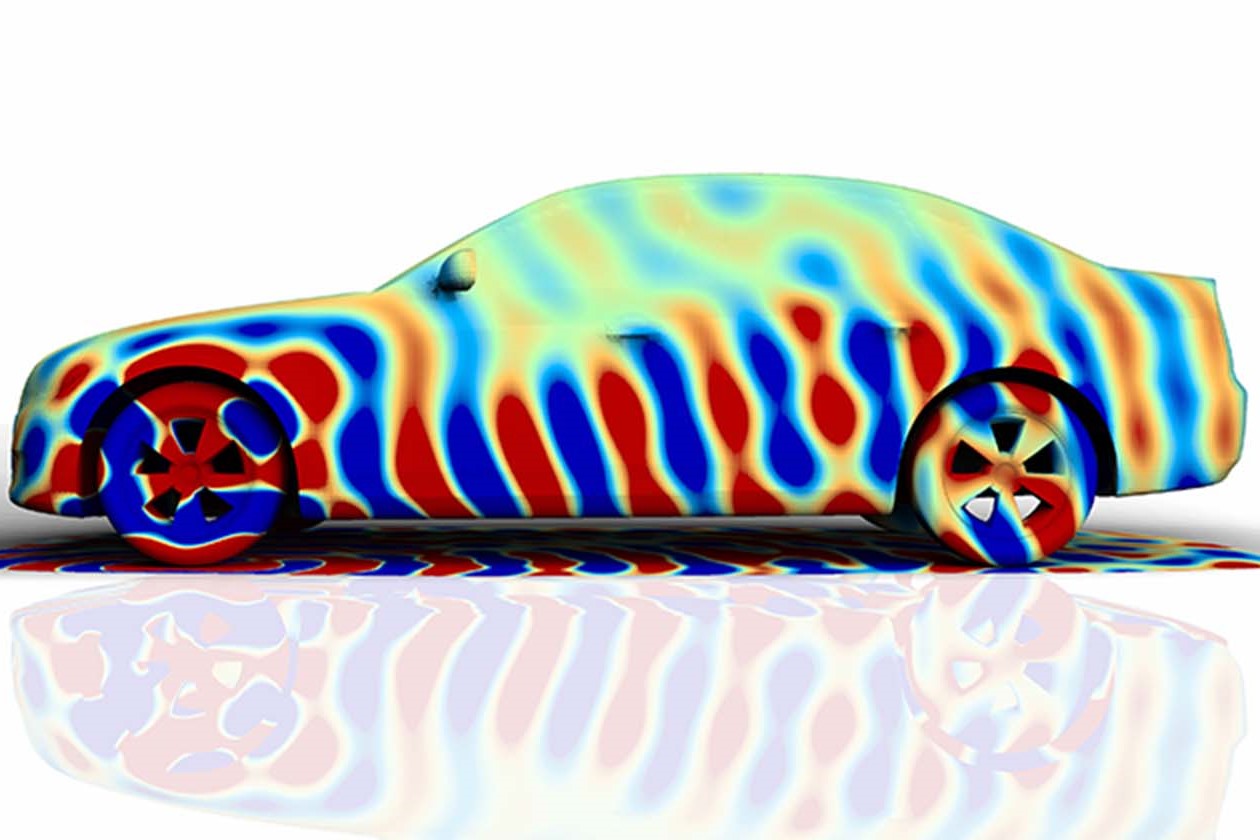Actran

Swift and intuitive acoustic prediction tools to deliver high-performing products
Actran enables you to push the boundaries of acoustic design, by reducing product development time and gathering increased insights into how to improve product performance. Its advanced simulation tools make predicting acoustic issues a seamless task.
Benefits And Features
A complete acoustic simulation solution for tackling any acoustic or noise problem.

Actran Acoustics
Actran Acoustics is the foundation module of the Actran family. It is both a standalone tool and is a pre-requisite for advanced modules like ActranVibroAcoustics, ActranAeroAcoustics, Actran for Trimmed Body, and Actran TM.

Actran VibroAcoustics
With the ability to simulate realistic modeling boundary conditions by combining dynamic, kinematic and acoustic constraints, as well as physical excitations like diffuse sound field and turbulent boundary layer, ActranAeroAcoustics can obtain accurate representation of the acoustic performance of your designs.

Actran AeroAcoustics
Using ActranAeroAcoustics, the noise generated by any turbulent flow can be thoroughly predicted. Users can benefit from all features of the Actran software suite to study the interaction between the aeroacoustic noise sources and a vibrating structure, absorbent materials, or acoustic traps such as resonators.
What's New
Learn about the latest in Actran 2025.1
Hexagon is proud to announce the release of Actran 2025.1, with its large improvements to the WorkflowManager. This version offers a brand new ePowertrain workflow, extended capabilities for the EM Noise workflow, documentation for some crucial workflow manager applications, and many more features.
Training and Resources
Connect and collaborate with your peers and experts
The Nexus Community provides you with excellent peer forums and the opportunity to learn from thousands of others in your industry. Currently, hundreds of peer forums waiting for you to explore into. Discover best practices and get the answers you need to succeed. Register for Nexus to get full access the Community forums.
Our team is ready to help
Our technical support teams are on hand to answer your questions. Contact us through our online form and we will get right back to you.
You might be interested in...
Related products
© 2026 Hexagon AB and/or its subsidiaries


